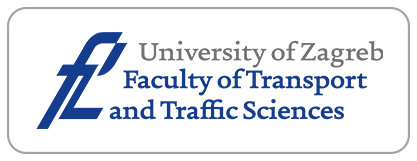Circle Line Optimization of Shuttle Bus in Central Business District without Transit Hub

Downloads
Downloads
Warade RK. The accessibility and development impacts of new transit infrastructure: the circle line in Chicago. Massachusetts Institute of Technology; 2007.
Zhibin J, Jia G, Ruihua X. Circle rail transit line timetable scheduling using Rail TPM. WIT Transactions on The Built Environment. 2010;114:945-952.
Chen B Y, Yuan H, Li Q, et al. Spatiotemporal data model for network time geographic analysis in the era of big data. International Journal of Geographical Information Science. 2016;30(6):1041-1071.
Wirasinghe SC. Nearly optimal parameters for a rail/feeder-bus system on a rectangular grid. Transportation Research Part A: General. 1980;14(1):33-40.
Bookbinder JH, Desilets A. Transfer optimization in a transit network. Transportation science. 1992;26(2):106-118.
Martins CL, Pato MV. Search strategies for the feeder bus network design problem. European Journal of Operational Research. 1998;106(2):425-440.
Quadrifoglio L, Li X. A methodology to derive the critical demand density for designing and operating feeder transit services. Transportation Research Part B: Methodological. 2009;43(10):922-935.
Ceder AA. Integrated smart feeder/shuttle transit service: simulation of new routing strategies. Journal of Advanced Transportation. 2013;47(6):595-618.
Dikas G, Minis I. Scheduled paratransit transport systems. Transportation Research Part B: Methodological. 2014;67:18-34.
Braekers K, Caris A, Janssens G K. Exact and meta-heuristic approach for a general heterogeneous dial-a-ride problem with multiple depots. Transportation Research Part B: Methodological. 2014;67:166-186.
Lai X, Li J, Li Z. A Subpath-based Logit Model to Capture the Correlation of Routes. Promet – Traffic & Transportation. 2016;28(3):225-234.
Saka AA. Model for Determining Optimum Bus-Stop Spacing in Urban Areas. Journal of Transportation Engineering. 2001;127(3):195-199.
Chien SI, Qin Z. Optimization of bus stop locations for improving transit accessibility. Transportation planning and Technology. 2004;27(3):211-227.
Shafahi Y, Khani A. A practical model for transfer optimization in a transit network: Model formulations and solutions. Transportation Research Part A: Policy and Practice. 2010;44(6):377-389.
Sivakumaran K, Li Y, Cassidy M J, et al. Cost-saving properties of schedule coordination in a simple trunkand-feeder transit system. Transportation Research Part A: Policy and Practice. 2012;46(1):131-139.
Sumalee A, Uchida K, Lam WHK. Stochastic multi-modal transport network under demand uncertainties and adverse weather condition. Transportation Research Part C: Emerging Technologies. 2011;19(2):338-350.
hibin J, Qixiang H. A Service-based Method to Generate Shuttle Bus Timetable in Accordance with Rail Transit Timetable. Procedia-Social and Behavioral Sciences. 2013;96:1890-1897.
Fu X, Lam WHK, Chen BY. A reliability-based traffic assignment model for multi-modal transport network under demand uncertainty. Journal of Advanced Transportation. 2014;48(1):66-85.
Liu Y, Bunker J, Ferreira L. Transit Users’ Route-Choice Modelling in Transit Assignment: A Review. Transport Reviews. 2010;30(6):753-769.
Ceder A. Optimal design of transit short-turn trips. Transportation Research Record. 1989;(1221):9-22.
Cepeda M, Cominetti R, Florian M. A frequency-based assignment model for congested transit networks with strict capacity constraints: characterization and computation of equilibria. Transportation research part B: Methodological. 2006;40(6):437-459.
İnanlı A, Ünsal B, Türsel Eliiyi D. Route Optimization for the Distribution Network of a Confectionary Chain. Promet – Traffic & Transportation. 2015;27(6):497-503.
Yu B, Kong L, Sun Y, Yao BZ, Gao ZY. A bi-level programming for bus lane network design. Transportation Research Part C: Emerging Technologies. 2015;55:310-327.
Yu B, Peng Z, Wang K, et al. An optimization method for planning the lines and the operational strategies of waterbuses: the case of Zhoushan city. Operational Research. 2015;15(1):25-49.
Yao BZ, Chen C, Cao QD, Jin L, Zhang MH, Zhu HB, Yu B. Short-term traffic speed prediction for an urban corridor. Computer-Aided Civil and Infrastructure Engineering. 2017:32(2):154-169.
Shrivastava P, O’Mahony M. A model for development of optimized feeder routes and coordinated schedules—A genetic algorithms approach. Transport policy. 2006;13(5):413-425.
Martínez LM, Eiró T. An optimization procedure to design a minibus feeder service: an application to the sintra rail line. Procedia-Social and Behavioral Sciences. 2012;54:525-536.
Ibeas Á, dell’Olio L, Alonso B, et al. Optimizing bus stop spacing in urban areas. Transportation research part E: Logistics and Transportation Review. 2010;46(3):446-458.
Ibeas A, Alonso B, dell’Olio L, et al. Bus Size and Headways Optimization Model Considering Elastic Demand. Journal of Transportation Engineering. 2013;140(4):04013021.
Szeto WY, Wu Y. A simultaneous bus route design and frequency setting problem for Tin Shui Wai, Hong Kong. European Journal of Operational Research. 2011;209(2):141-155.
Ruisanchez F, Ibeas A. Design of a tabu search algorithm for assigning optimal bus sizes and frequencies in urban transport services. Journal of Advanced Transportation. 2012;46(4):366-377.
Ngamchai S, Lovell DJ. Optimal time transfer in bus transit route network design using a genetic algorithm. Journal of Transportation Engineering. 2003;129(5):510-521.
Chen BY, Lam WHK, Sumalee A, et al. Reliable shortest path finding in stochastic networks with spatial correlated link travel times. International Journal of Geographical Information Science. 2012;26(2):365-386.
Srinivas N, Deb K. Muiltiobjective optimization using nondominated sorting in genetic algorithms. Evolutionary computation. 1994;2(3):221-248.
Deb K, Agrawal S, Pratap A, et al. A fast elitist non-dominated sorting genetic algorithm for multi-objective optimization: NSGA-II. Proceedings of the 6th International Conference on Parallel Problem Solving from Nature – PPSN VI; 2000 Sep 18-20; Paris, France. Berlin, Heidelberg: Springer; 2000. p. 849-858.
Shimamoto H, Kurauchi F, Iida Y, et al. Evaluating public transit congestion mitigation measures using a passenger assignment model. Journal of the Eastern Asia Society for Transportation Studies. 2005;6:2076-2091.
Kwan CM, Chang CS. Timetable synchronization of mass rapid transit system using multiobjective evolutionary approach. IEEE Transactions on Systems, Man, and Cybernetics, Part C (Applications and Reviews). 2008;38(5):636-648.
Lau HCW, Chan TM, Tsui WT, et al. A fuzzy guided multi-objective evolutionary algorithm model for solving transportation problem. Expert Systems with Applications. 2009;36(4):8255-8268.
Song Y, Ma J, Guan W, et al. A multi-objective model for regional bus timetable based on NSGA-II. Proceedings of the 2012 IEEE International Conference on Computer Science and Automation Engineering (CSAE); 2012 May 25-27; Zhangjiajie, China; 2012;2:185-188.
Khoo HL, Teoh LE, Meng Q. A bi-objective optimization approach for exclusive bus lane selection and scheduling design. Engineering Optimization. 2014;46(7):987-1007.




















